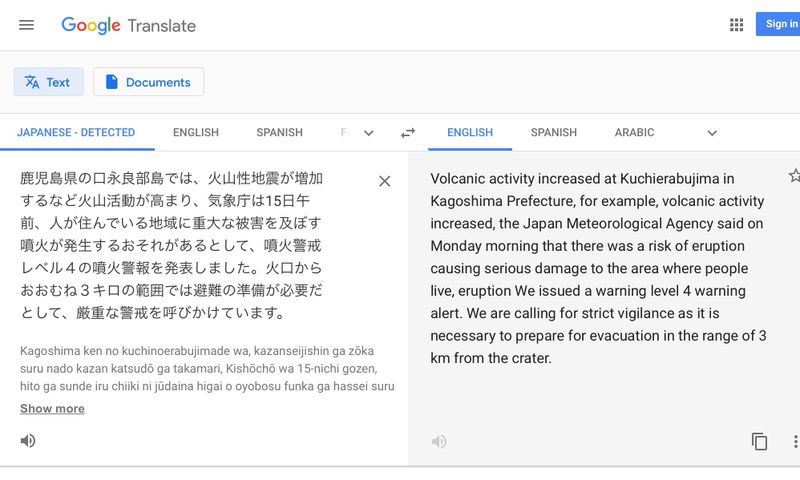Aug 15, 2018
Reading aloud in Japanese to better fluency
A great source of heartache for me and Daikichi, my man, is my ability to communicate in Japanese. Daikichi speaks standard Japanese and the local dialect, can define a lot of English vocabulary in Japanese, but has a rudimentary understanding of English grammar and syntax. As a result, most of our communication is in Japanese. But it's not terribly idiomatic or fluent Japanese on my side.
I'm no slacker when it comes to learning Japanese, either. Last year, I made a successful attempt at Level 2 (N2) of the Japanese Language Proficiency Test. The test indicates reading, vocabulary and listening comprehension. This is a good measure of language knowledge, but it doesn't indicate fluency at all. To get my fluency up, I think I need a lot more models of practical usage, and practice listening to and saying compound sentences in context.
So, how can I do this? Well, reading is a real chore since I run into a lot of kanji I don't know. Sure, I can get the gist of stories on NHK news but for the most part I cannot read them aloud since I miss a lot of the kanji readings and struggle to smoothly say the sentences.
Daikichi has a solution. It's 朗読, roudoku, or reading aloud. This can mean audio books or reading a text aloud yourself. So I'm taking a crack at it.
I'll tell you some of the resources I've discovered.
Look Up
I use an iPad Mini every day. You may have an iPhone or an iPad handy. In settings, go to General and Dictionary. Select Japanese and Japanese-English. When you are surfing the Web and encounter kanji you don't know, hover your finger over it and select it. You usually get a gloss of the kanji with the Japanese reading and meaning, and possibly the pronunciation and meaning in English. This gives you a shot at knowing both the reading and meaning in one shot while you're trying to get the gist of a passage. Here's an example from NHK news to do with the latest exploding volcano.

As you can see, the dictionaries give you an explanation in Japanese, the reading in hiragana, the kanji, and the meaning in English. How cool is that? I read the news articles aloud with the help of these kanji look up resources.
Google Translate
You think, you shouldn't depend on machine translation. And I quite agree with you. However, Google Translate, both on the Web and through the app, has an amazing feature for those of us who have big vocabularies but poor reading skills. Google Translate has a machine voice which will read the Japanese text to you.

See the little speaker button in the bottom left of the original Japanese and romaji text? Click that, and a machine voice, but very proper and female, will read the original Japanese text to you. This is an awesome resource for learning not only kanji reading but phrasing and tone (yep, Japanese has tonal features like some other Asian languages, but different). For practice, I read aloud behind the machine voice to get the tones and phrasing right. It's a challenge, but I find it helps my fluency greatly.
Audio Books and Short Stories
This is the mother lode when it comes to reading kanji, learning the phrasing of Japanese, and grasping idiomatic expression typical of written texts. Aozora Bunko is the Japanese answer to Project Gutenburg. Classic Japanese literature is available for free. There are also translated works of famous writers from around the world. Read to your heart's content!
Aozora Bunko has an audio version, too. Check out Aozora Rodoku, Aozora's library of audio books. You can select the content by author, genre, and the length of the reading. Start easy, go long!
Don't give up. You can learn to comprehend longer and more complex texts, and in your own speech, after a lot of modeling, you, too can learn to communicate what you want. I do my best for Daikichi-san and all my lovely friends.



0 Comments